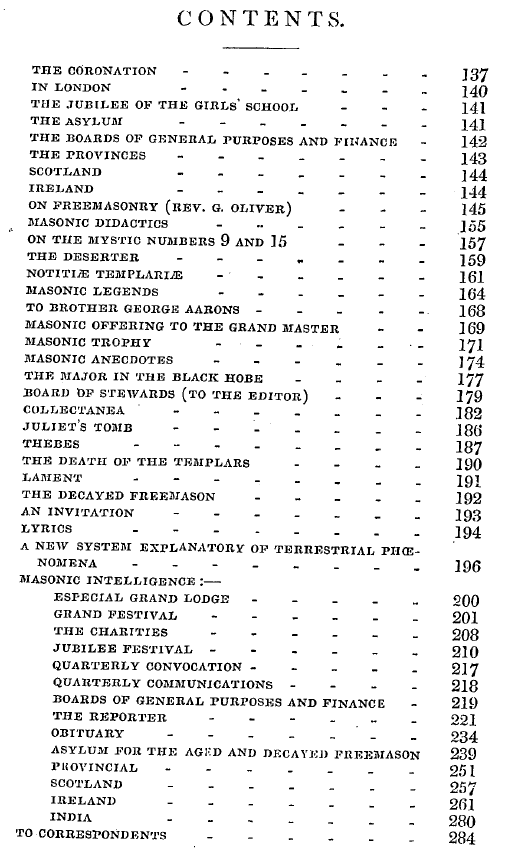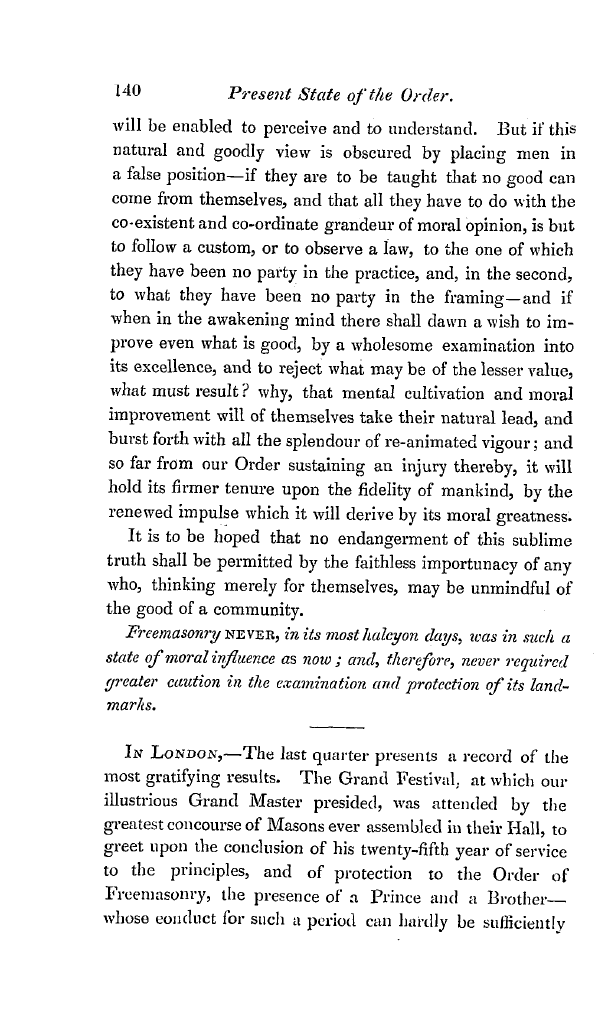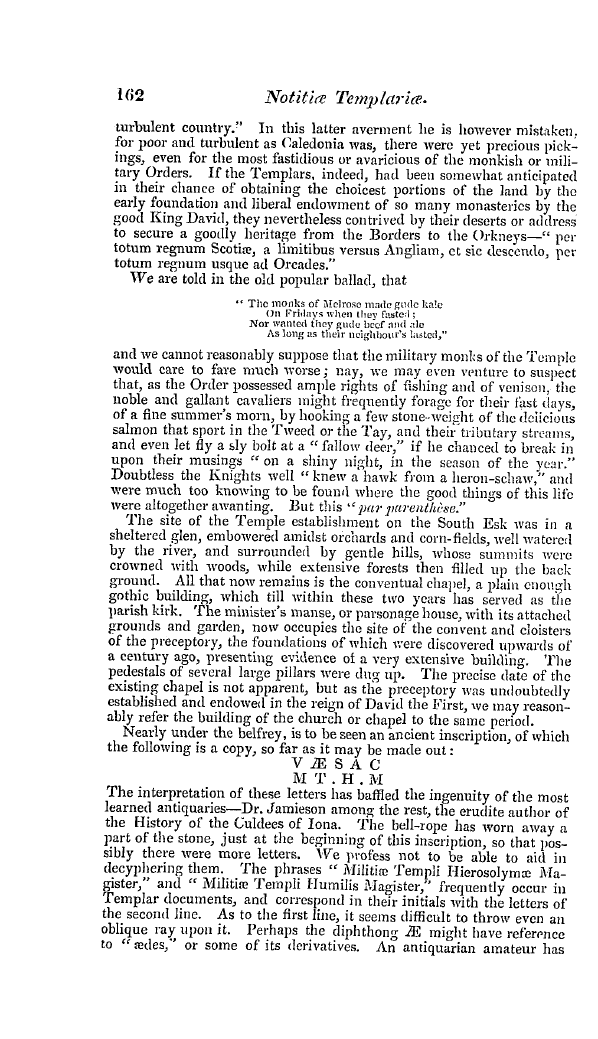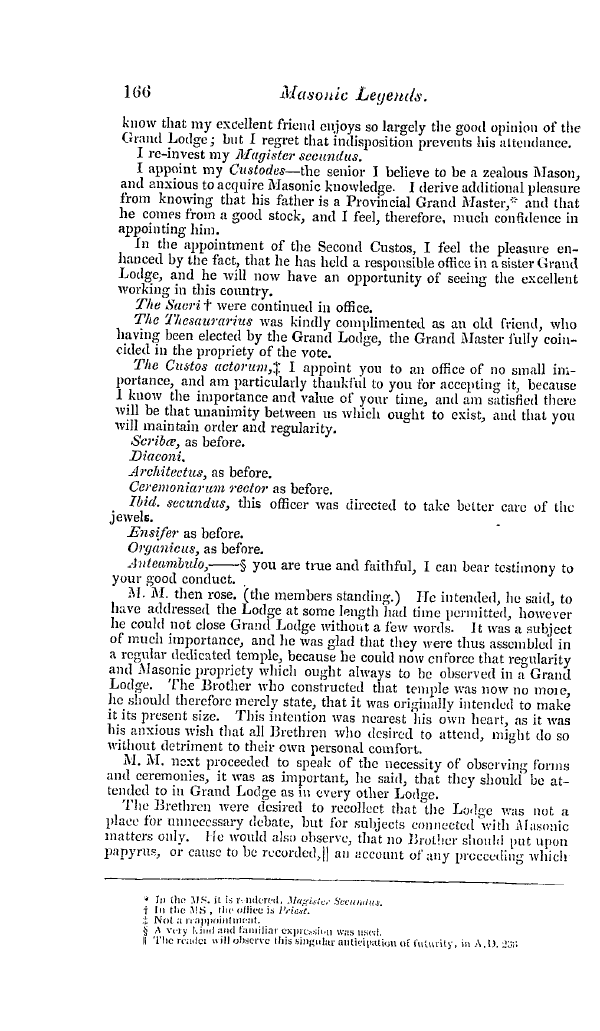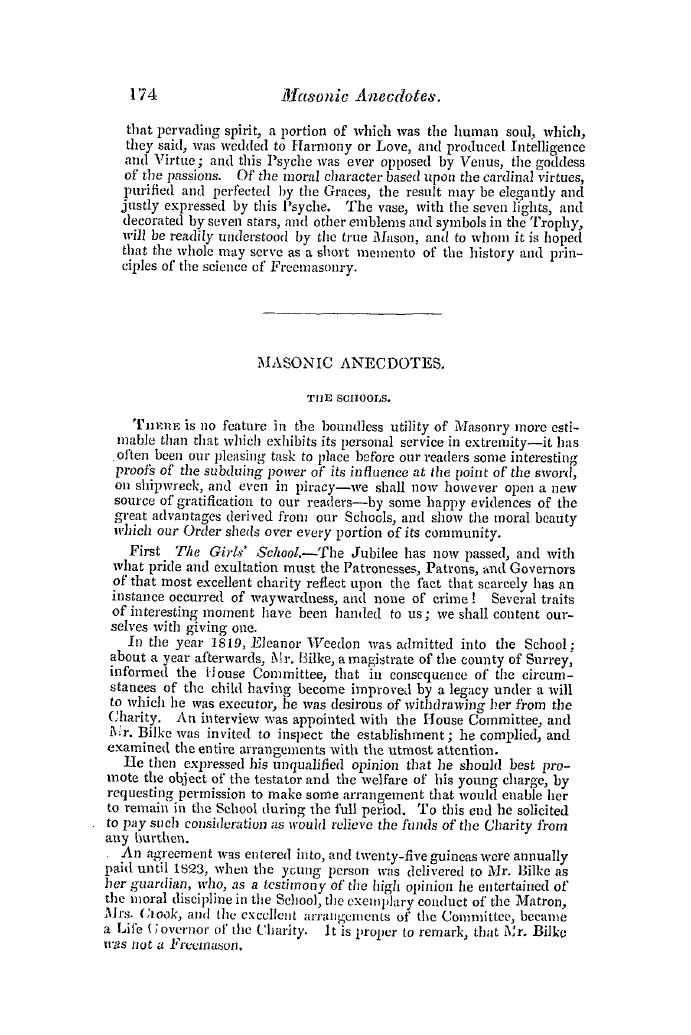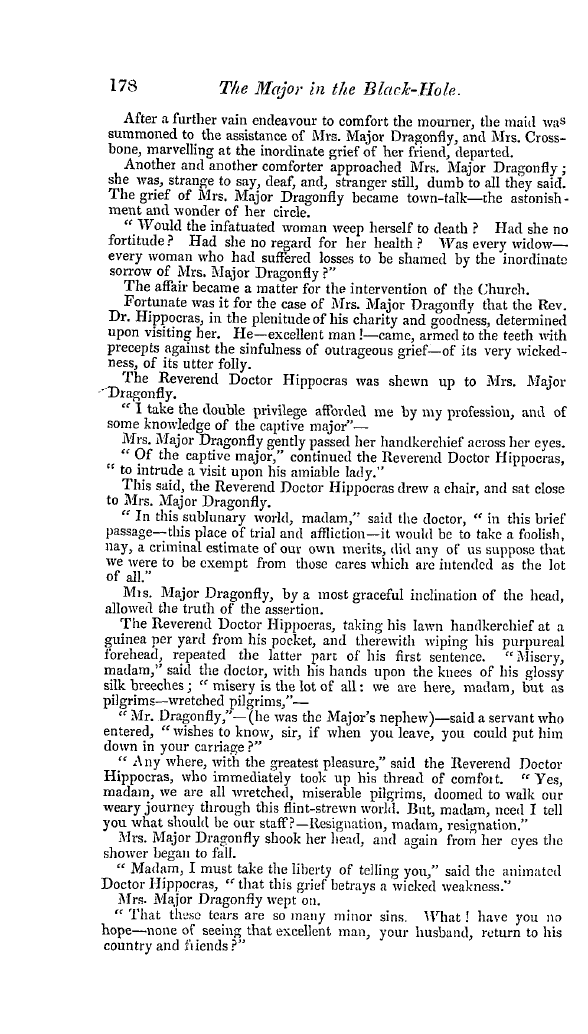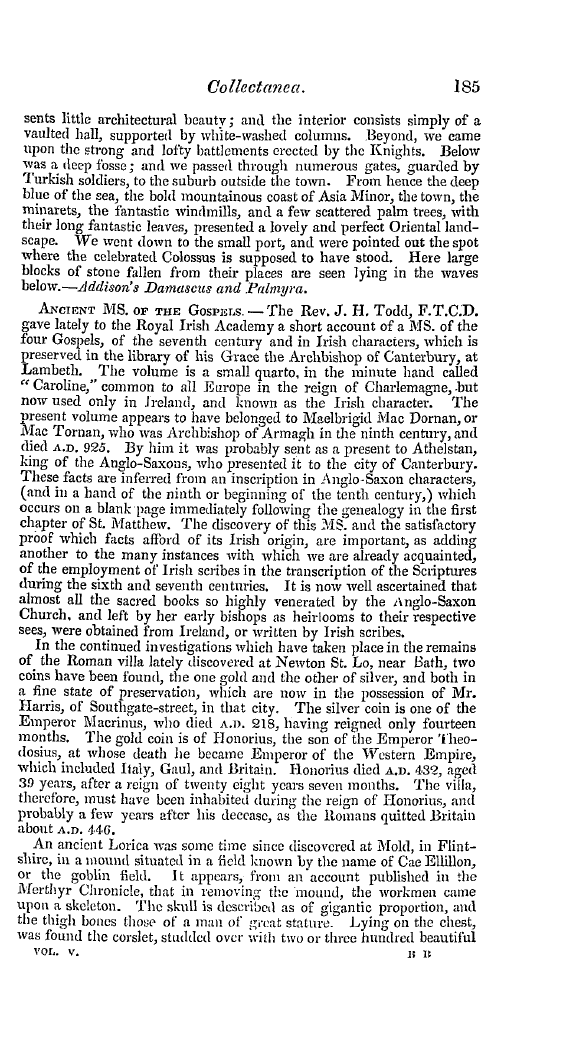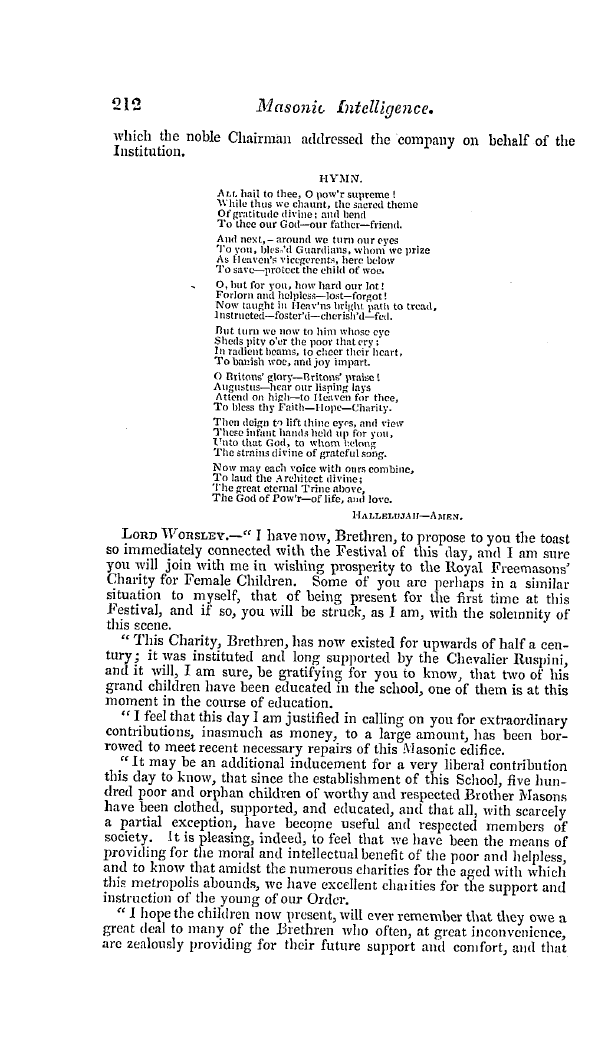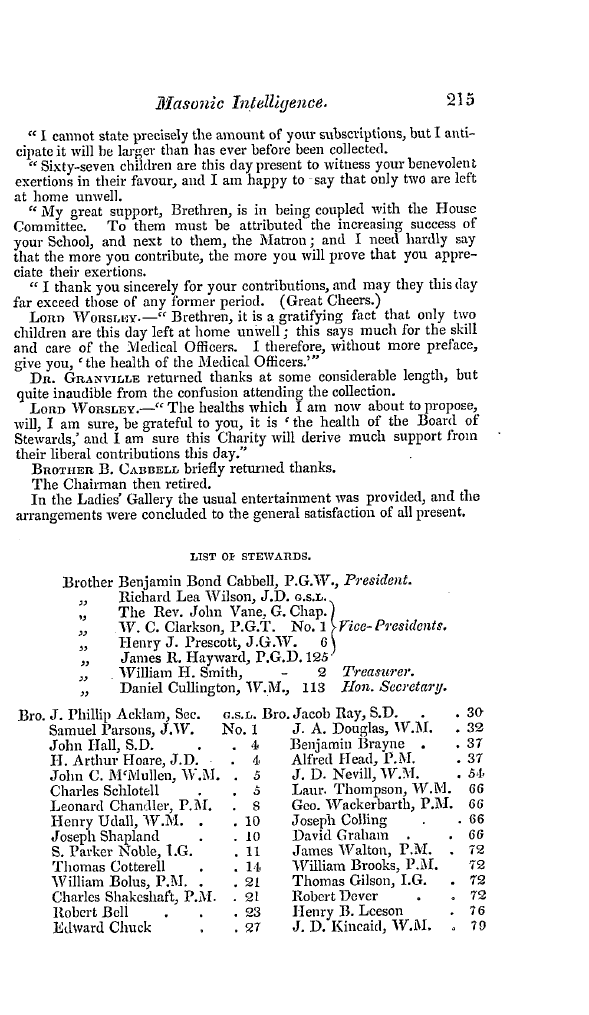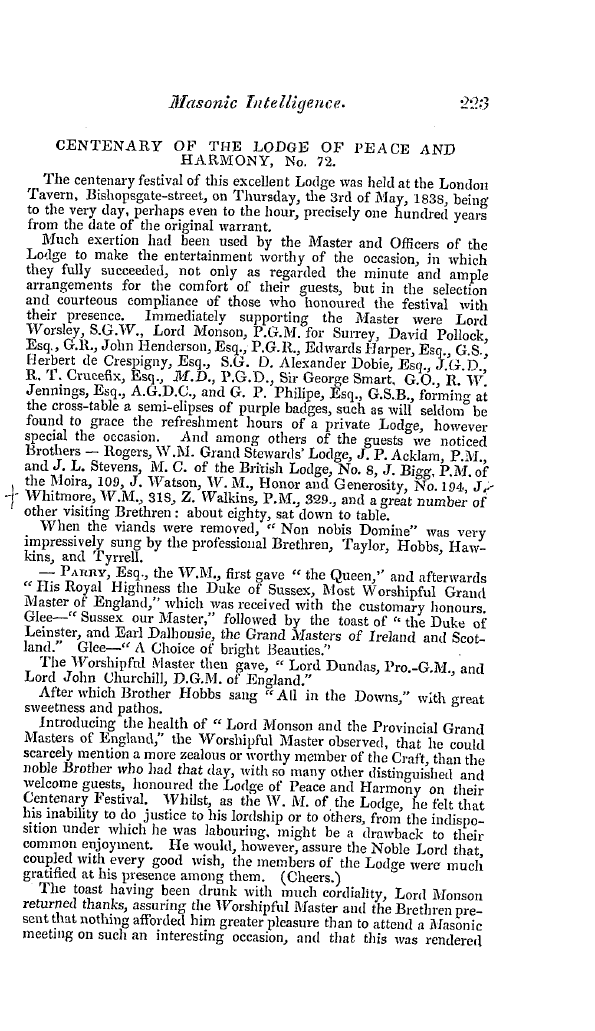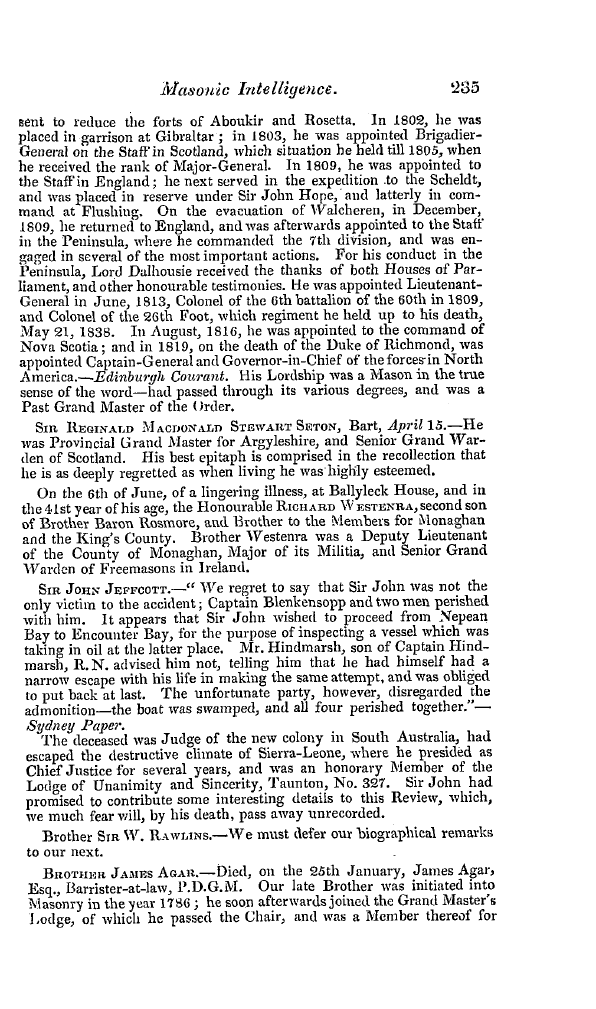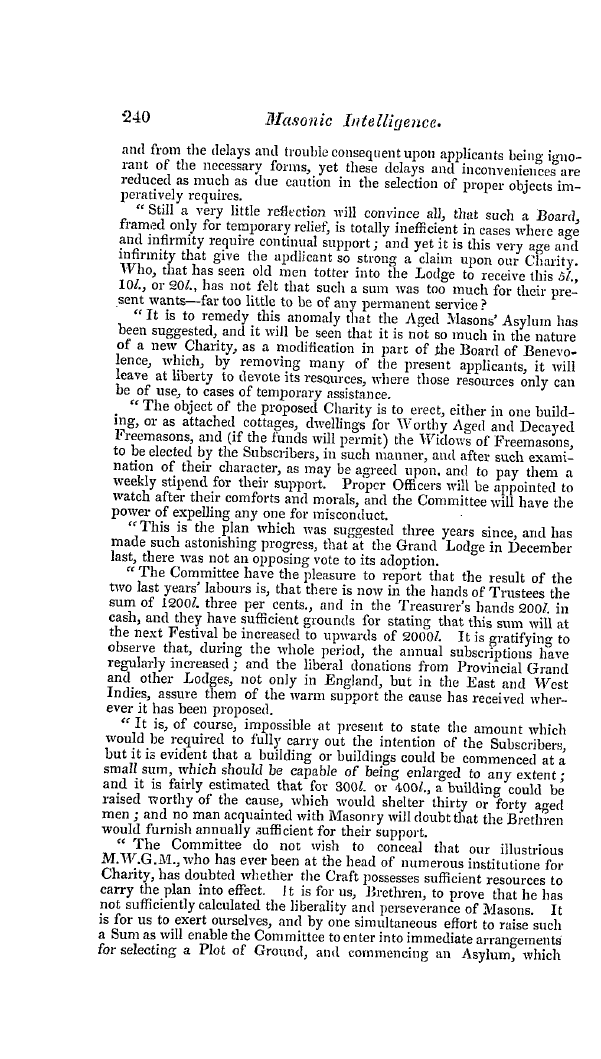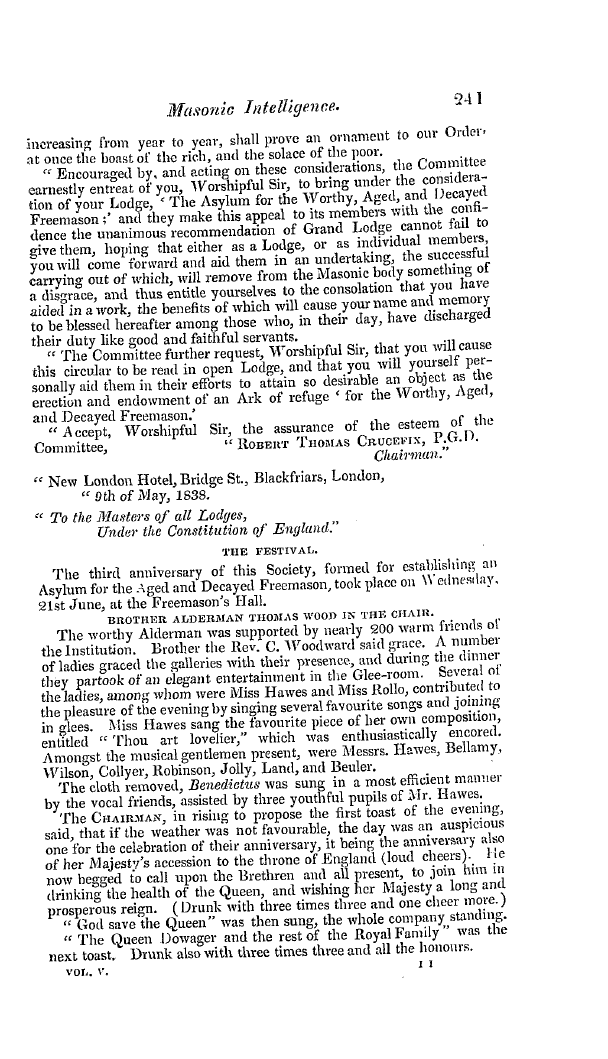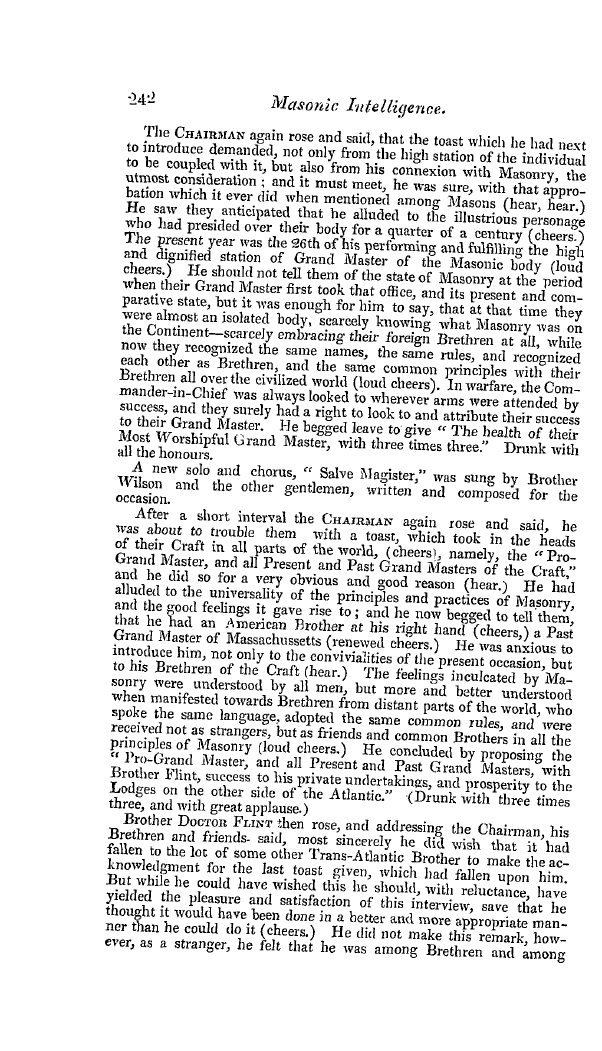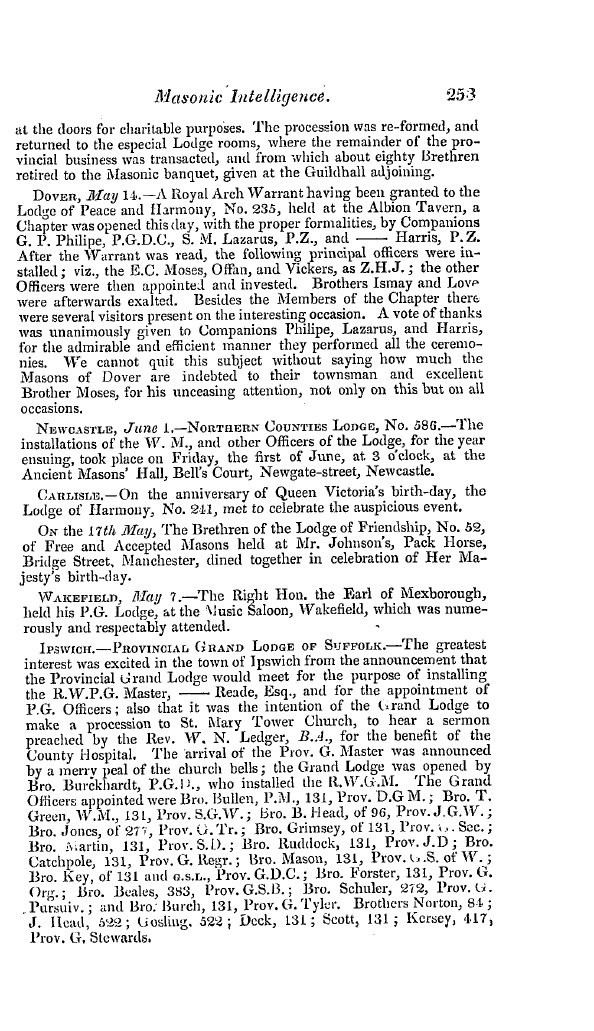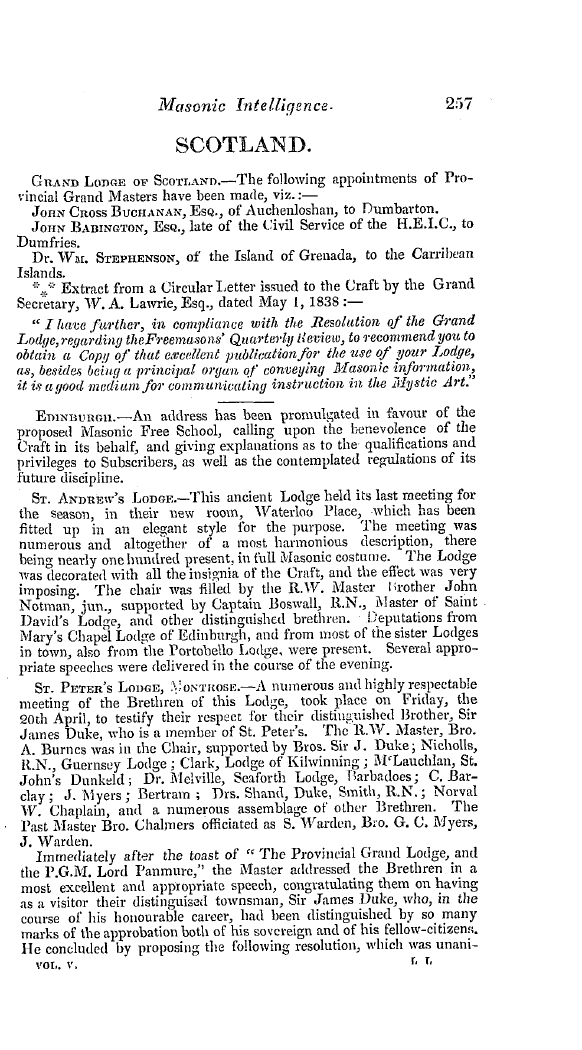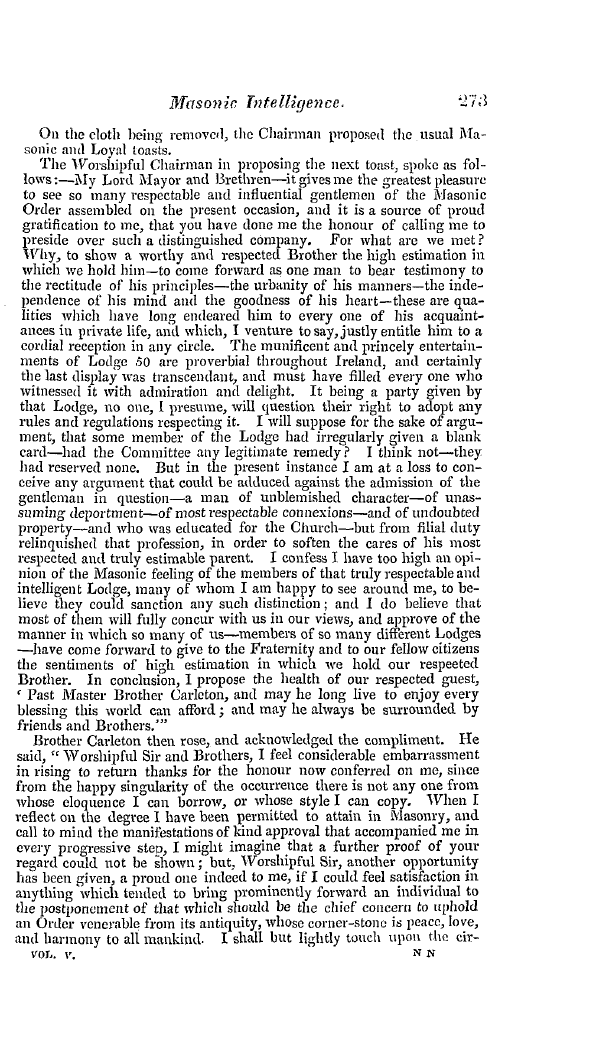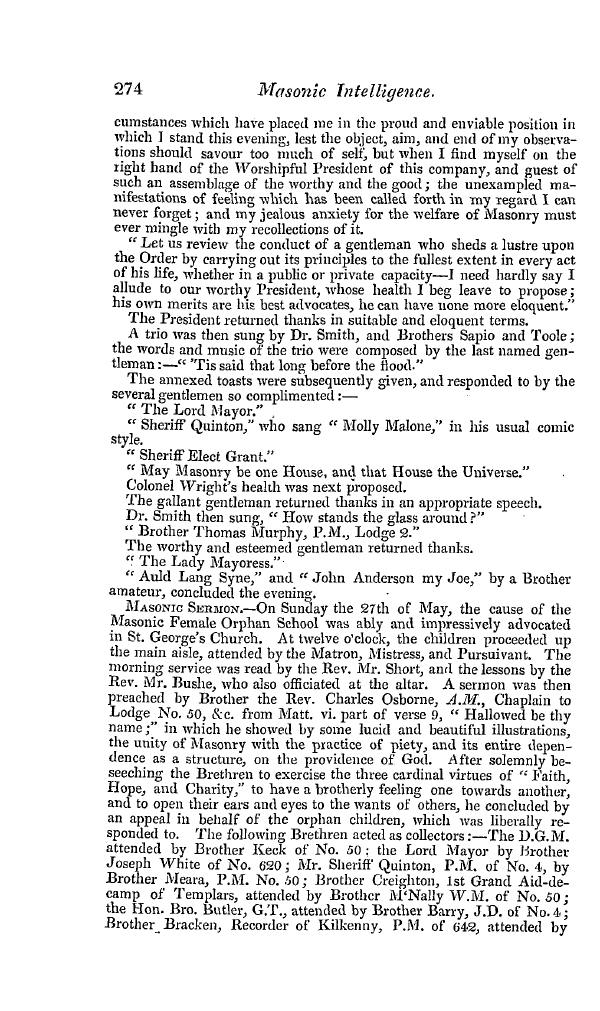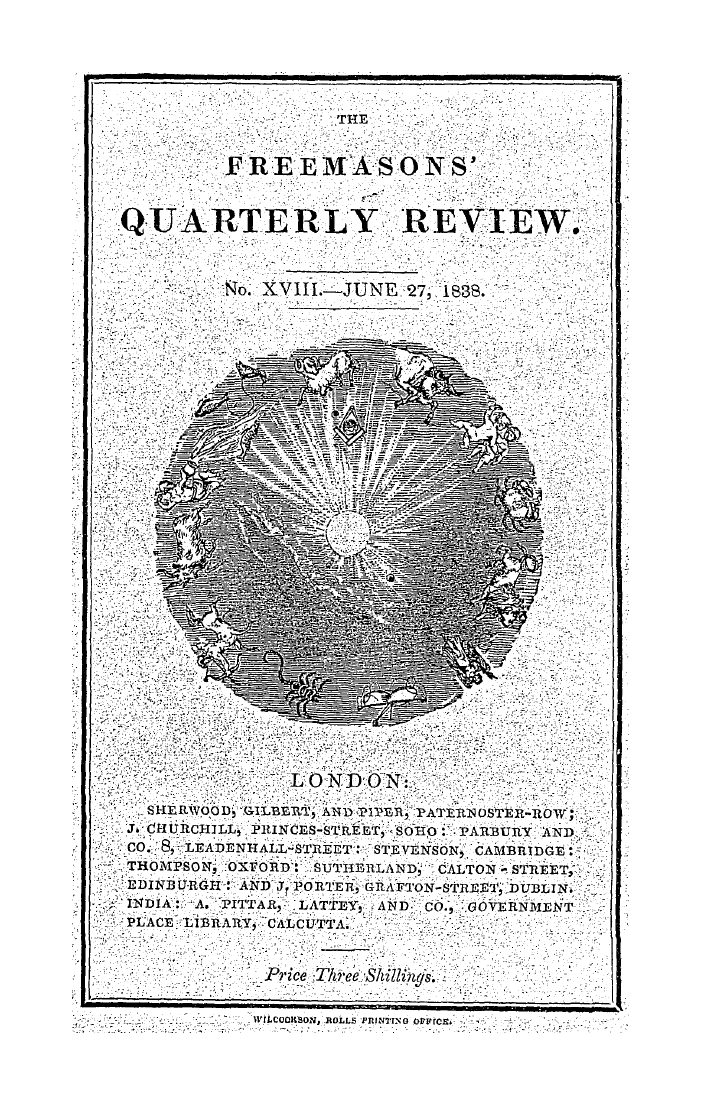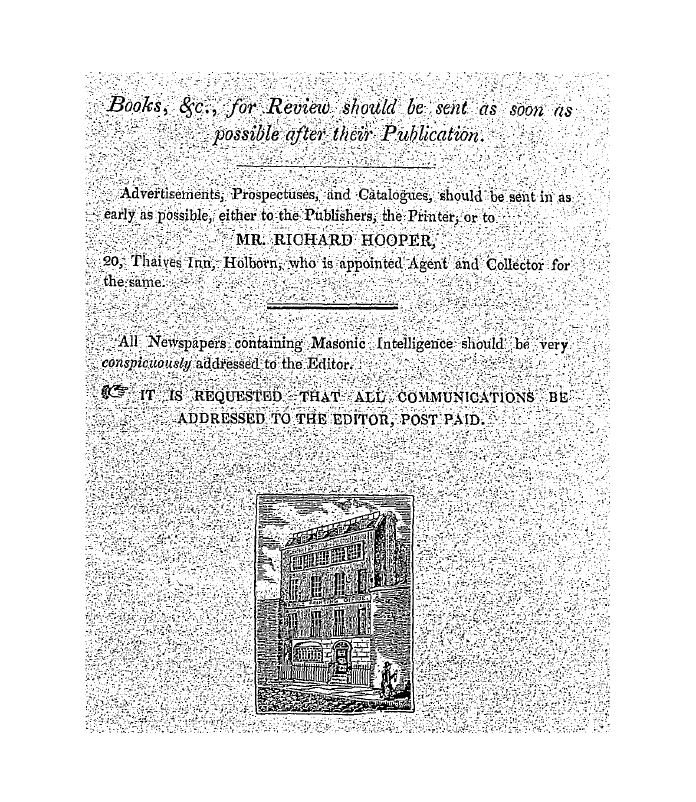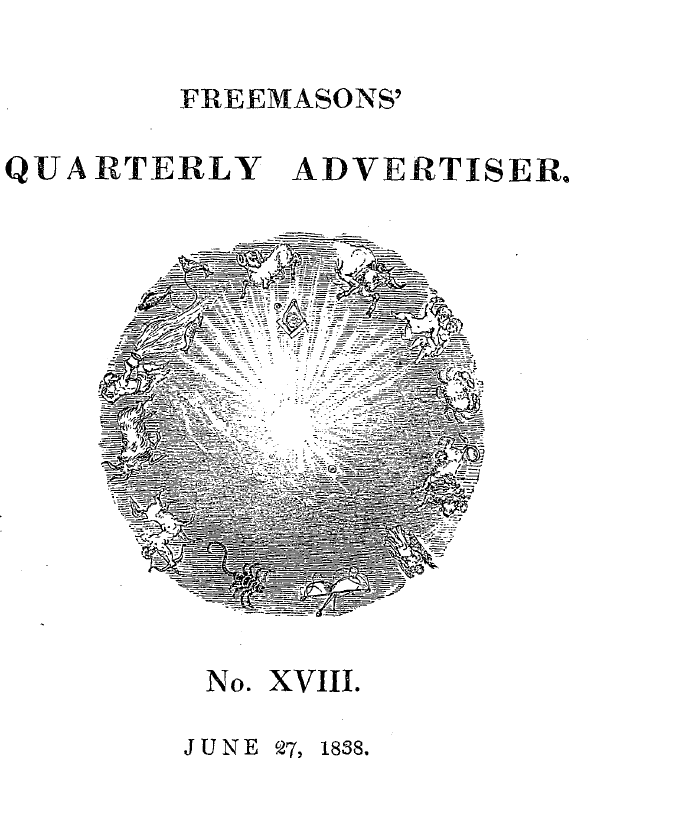-
Articles/Ads
Article NOTITIAE TEMPLARIAE, No. 6. ← Page 2 of 4 →
Note: This text has been automatically extracted via Optical Character Recognition (OCR) software.
Notitiae Templariae, No. 6.
turbulent country . '' In this latter averment he is however mistaken , for poor and turbulent as Caledonia was , there were yet precious pickings , even for the most fastidious or avaricious of the monkish or military Orders . If the Templars , indeed , hacl been somewhat anticipated in their chance of obtaining the choicest portions of the land hy the early foundation and liberal endowment of so many monasteries by the good King David , they nevertheless contrived hy their deserts or address
to secure a goodly heritage from the Borders to the Orkneys— " per totum regnum Sco ' tia ? , a limitibus versus Angliam , ct sic descendo , per totum regnum usque ad Orcades . " We are told in the old popular ballad , that
" Tlio monks of lIcJro . sc made glide kale On Fridays when thev fas ' ted ; Nor wanted they gude bc ' cf and ale As long as their neighbour ' s lasted , " and we cannot reasonably suppose that the military monks of the Temple would care to fare much worse ; nay , ive may even venture to suspect that , as the Order possessed ample rights of fishing and of venison , the noble ancl gallant cavaliers might frequently forage for their fast clays , of fine ' b
a summers morn , y hooking a few stone-weight of the delicious salmon that sport in the Tweed or the Tay , and their tributary streams , and even let fly a sly bolt at a "fallow deer , " if he chanced to break in upon their musings " on a shiny night , in the season of the year . " Doubtless the Knights well " knew a hawk from a heron-schaw , " and -were much too knowing to be found where the good things of this life were altogether awanting . But this " pareiithcse . "
par The site of the Temple establishment on the South Esk was in a sheltered glen , embowered amidst orchards ancl corn-fields , well watered by the river , and surrounded by gentle hills , whose summits were crowned with woods , while extensive forests then filled up the back ground . All that now remains is the conventual chapel , a plain enough gothic building , which till within these two years has served as the parish kirk . The minister ' s manse , or parsonage house , with its attached ancl
grounds garden , now occupies the site of the convent ancl cloisters of the preceptory , the foundations of which ivere discovered upwards of a century ago , presenting evidence of a very extensive building . The pedestals of several large pillars were dug up . The precise date of the existing chapel is not apparent , but as tiie preceptory was undoubtedl y established ancl endowed in the reign of David the First , we may reasonably refer the building of the church or chapel to the same period . Nearly under the belfrey , is to be seen an ancient inscription , of which the following is a copy , so far as it may be made out :
VJESAC M T . H . M The interpretation of these letters has baffled the ingenuity of the most learned antiquaries—Dr . Jamieson among the rest , the erudite author of the History of the Culdees of Iona . The bell-rope has worn away a part of the stone , just at the beginning of this inscription , so that possibly there were more letters . We profess not to be able to aid in
deciphering them . The phrases " Militia ; Templi Hierosolyma . Magister , " and " Militia ? Templi Humilis Magister , " frequently occur in Templar documents , and correspond in their initials with the letters of the second line . As to the first line , it seems difficult to throw even an oblique ray upon it . Perhaps the di phthong M might have reference to " aides , " or some of its derivatives . An antiquarian amateur has
Note: This text has been automatically extracted via Optical Character Recognition (OCR) software.
Notitiae Templariae, No. 6.
turbulent country . '' In this latter averment he is however mistaken , for poor and turbulent as Caledonia was , there were yet precious pickings , even for the most fastidious or avaricious of the monkish or military Orders . If the Templars , indeed , hacl been somewhat anticipated in their chance of obtaining the choicest portions of the land hy the early foundation and liberal endowment of so many monasteries by the good King David , they nevertheless contrived hy their deserts or address
to secure a goodly heritage from the Borders to the Orkneys— " per totum regnum Sco ' tia ? , a limitibus versus Angliam , ct sic descendo , per totum regnum usque ad Orcades . " We are told in the old popular ballad , that
" Tlio monks of lIcJro . sc made glide kale On Fridays when thev fas ' ted ; Nor wanted they gude bc ' cf and ale As long as their neighbour ' s lasted , " and we cannot reasonably suppose that the military monks of the Temple would care to fare much worse ; nay , ive may even venture to suspect that , as the Order possessed ample rights of fishing and of venison , the noble ancl gallant cavaliers might frequently forage for their fast clays , of fine ' b
a summers morn , y hooking a few stone-weight of the delicious salmon that sport in the Tweed or the Tay , and their tributary streams , and even let fly a sly bolt at a "fallow deer , " if he chanced to break in upon their musings " on a shiny night , in the season of the year . " Doubtless the Knights well " knew a hawk from a heron-schaw , " and -were much too knowing to be found where the good things of this life were altogether awanting . But this " pareiithcse . "
par The site of the Temple establishment on the South Esk was in a sheltered glen , embowered amidst orchards ancl corn-fields , well watered by the river , and surrounded by gentle hills , whose summits were crowned with woods , while extensive forests then filled up the back ground . All that now remains is the conventual chapel , a plain enough gothic building , which till within these two years has served as the parish kirk . The minister ' s manse , or parsonage house , with its attached ancl
grounds garden , now occupies the site of the convent ancl cloisters of the preceptory , the foundations of which ivere discovered upwards of a century ago , presenting evidence of a very extensive building . The pedestals of several large pillars were dug up . The precise date of the existing chapel is not apparent , but as tiie preceptory was undoubtedl y established ancl endowed in the reign of David the First , we may reasonably refer the building of the church or chapel to the same period . Nearly under the belfrey , is to be seen an ancient inscription , of which the following is a copy , so far as it may be made out :
VJESAC M T . H . M The interpretation of these letters has baffled the ingenuity of the most learned antiquaries—Dr . Jamieson among the rest , the erudite author of the History of the Culdees of Iona . The bell-rope has worn away a part of the stone , just at the beginning of this inscription , so that possibly there were more letters . We profess not to be able to aid in
deciphering them . The phrases " Militia ; Templi Hierosolyma . Magister , " and " Militia ? Templi Humilis Magister , " frequently occur in Templar documents , and correspond in their initials with the letters of the second line . As to the first line , it seems difficult to throw even an oblique ray upon it . Perhaps the di phthong M might have reference to " aides , " or some of its derivatives . An antiquarian amateur has
